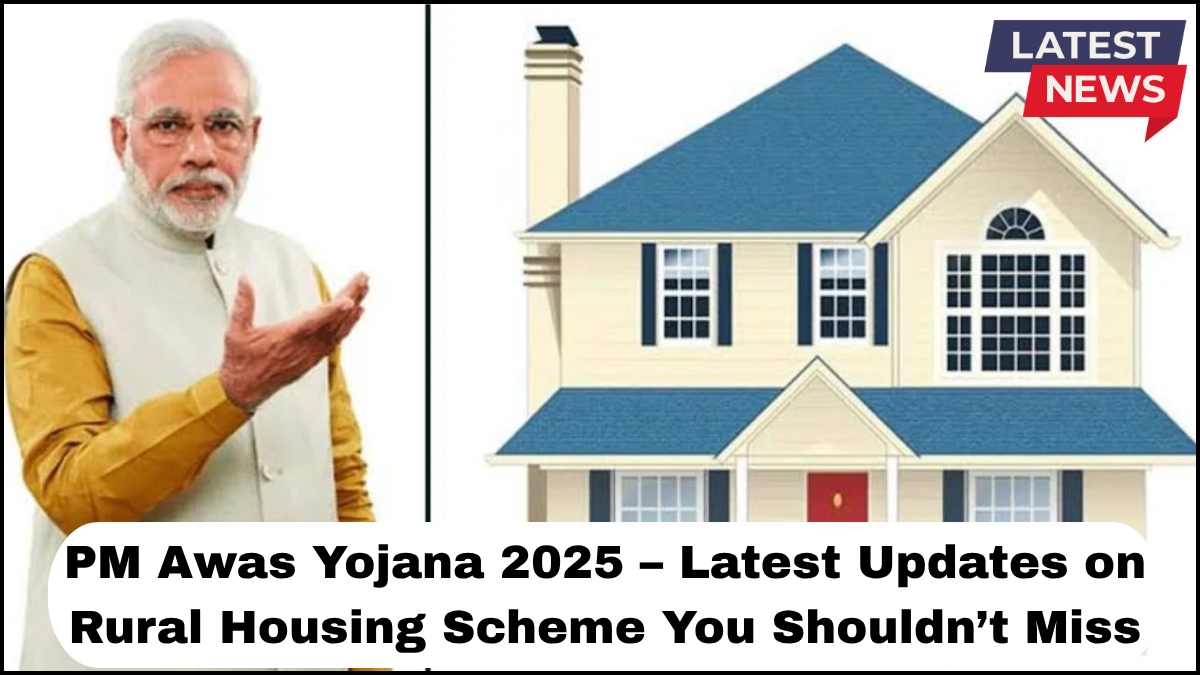PM Awas Yojana 2025 Update brings fresh momentum to India’s Rural Housing Scheme, highlighting key developments for village dwellers. This comprehensive guide explores new eligibility criteria, funding mechanisms, implementation milestones and answers critical questions to help you stay informed.

H3: What Is the Rural Housing Scheme Under PM Awas Yojana?
The Rural Housing Scheme launched under this flagship initiative aims to provide safe, affordable homes to rural households. In 2025, the program continues to emphasize financial assistance, infrastructure support and quality assurance in house construction. The scheme covers beneficiaries based on income, vulnerability and housing needs, extending assistance to eligible families in every gram panchayat.
H3: Key Highlights in PM Awas Yojana 2025 Update
-
Enhanced Subsidy Amounts – The central grant per dwelling has increased by up to ₹1 lakh for non-migratory regions, offering greater financial relief. Beneficiaries in hilly, difficult terrain or seismic zones receive even higher support through region-specific additional funding.
-
Improved Timeline Commitments – State agencies must now complete beneficiary verification, construction approval and fund release within 60 days, a tighter schedule than previous iterations.
-
Quality Control Measures – Third-party audits and geo-tagged photographs at every construction milestone are now mandatory, ensuring durable and safe homes.
-
Digital Monitoring Dashboard – A transparent portal displays real-time progress of houses sanctioned, under construction and completed across villages, enabling public accountability.
-
Green and Climate‑Resilient Upgrades – New guidelines encourage solar water heating, rainwater harvesting and climate‑responsive design, helping rural homes remain comfortable and sustainable.
H3: Eligibility and Beneficiary Criteria Updated for 2025
To qualify under the Rural Housing Scheme, applicants must satisfy:
-
Being on the lowest-income segment such as EWS (Economically Weaker Section), or belonging to vulnerable groups including SC/ST families or widows.
-
Not owning a pucca house in any part of the country, confirmed through local verification.
-
Having local residence proof and following fair labour rules if contributing their own labour.
-
No outstanding tax liability or exclusions from previous scheme violations.
New in 2025, priority lists now include households affected by recent climate events (e.g., floods, cyclones) and those living in multipurpose common houses declared unsafe.
H3: Implementation Process – From Application to Handover
-
Application Stage – Prospective beneficiaries apply via the rural housing portal or local gram panchayat office, attaching ID, income certificate, and residence proof.
-
Verification and Approval – District officials shortlist applicants and verify documentation, then approve funding and assign construction slots.
-
Construction Phase – Construction typically begins within two weeks of approval. Beneficiaries may receive workers’ kits if contributing unskilled labour.
-
Disbursement of Funds – Funds are released in three staged instalments: foundation, lintel level and completion. Each stage requires geo-tagged photos.
-
Final Inspection and Ownership Transfer – Once construction passes quality audit, the beneficiary receives legal ownership and the house is registered under record title.
H3: Impact and Success Stories from Rural Regions
-
In Uttar Pradesh, over 500,000 rural homes were completed within 18 months under the 2025 update, dramatically cutting homelessness in target districts.
-
In Odisha, communities affected by Cyclone FANI qualified for priority slots in the 2025 roll‑out, ensuring safe re‑housing quickly.
-
Remote villages in Arunachal Pradesh now have solar‑powered rooftops, part of the new green incentive.
These success stories highlight how strategic policy updates benefit rural India directly through timely delivery, robust infrastructure, and community involvement.
H3: Challenges and What’s Next in PM Awas Yojana 2025
Despite progress, a few challenges remain:
-
Infrastructure gaps – In remote areas, basic roads or water supply still impede timely construction.
-
Awareness issues – Some eligible families remain unaware of the scheme or ineligible due to documentation lapses.
-
Quality consistency – Though geo‑tagging helps, ensuring durable construction across diverse regions is an ongoing task.
Going forward, upgrades may include mobile application-based grievance redress, stronger coordination with rural electrification programs, and enhanced training for local masons to meet technical standards.
H3: Frequently Asked Questions
Q: Who qualifies for PM Awas Yojana 2025 under the Rural Housing Scheme?
A: Rural households in the EWS category, or registered as SC, ST, widows, or vulnerable groups without any existing pucca housing qualify, subject to local verification.
Q: What is the updated subsidy amount per house in 2025?
A: Base subsidy has increased by up to ₹1 lakh in 2025, with additional top‑ups in hilly, difficult terrain or climate‑affected zones.
Q: How long does the construction process take?
A: From approval to completion, the timeline is roughly 3–4 months, with funds disbursed in three stages and mandatory geo‑tagged verification at each stage.
Q: Can I include eco‑friendly features in the house?
A: Yes. The updated guidelines encourage solar water systems, rainwater harvesting and climate‑responsive features, with extra incentives available.
Q: How can I check my application status?
A: Use the centralized digital monitoring dashboard or visit your gram panchayat office for updates on verification, construction and fund disbursal status.
click here to learn more
